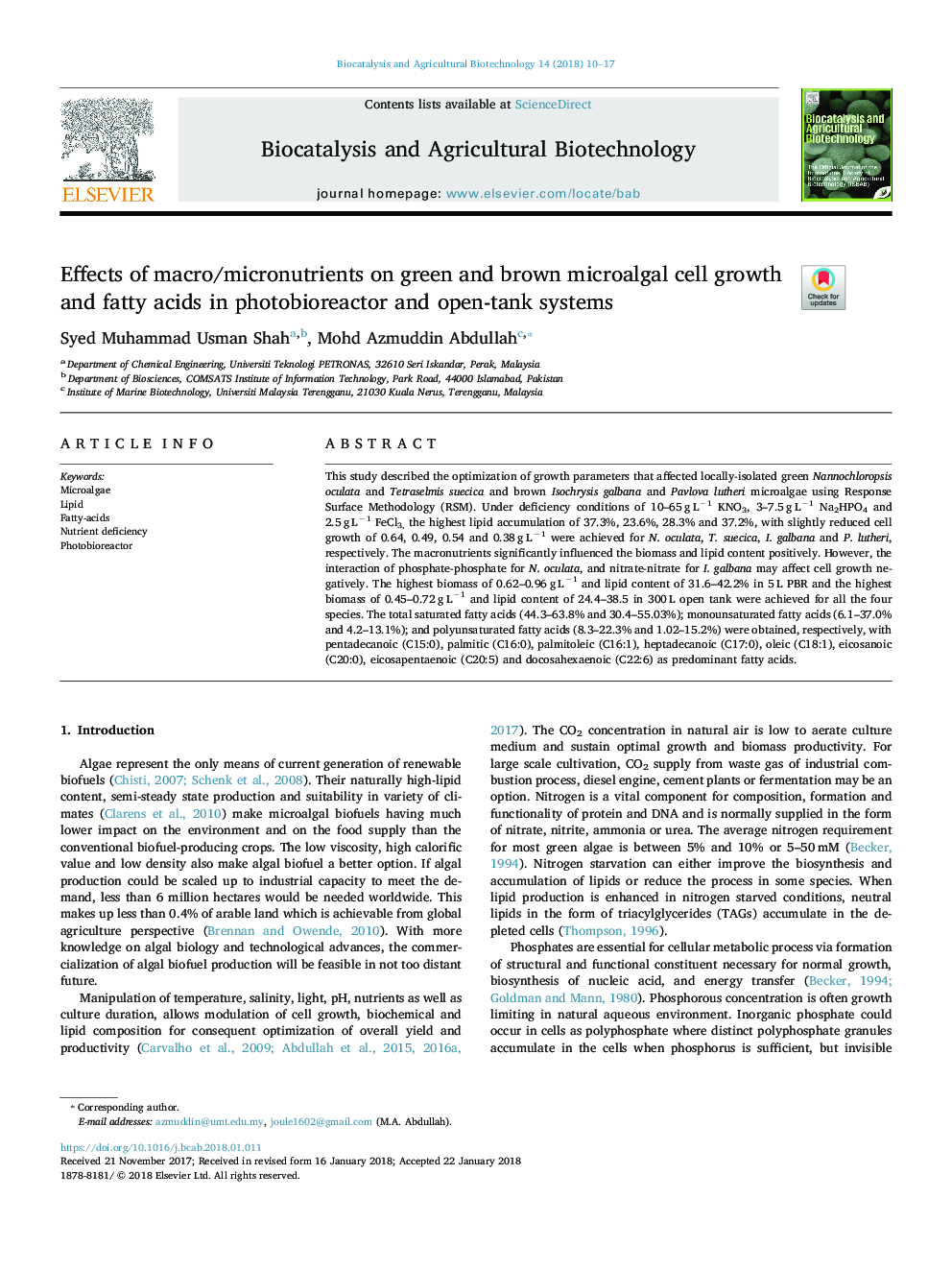| Article ID | Journal | Published Year | Pages | File Type |
|---|---|---|---|---|
| 8405869 | Biocatalysis and Agricultural Biotechnology | 2018 | 8 Pages |
Abstract
This study described the optimization of growth parameters that affected locally-isolated green Nannochloropsis oculata and Tetraselmis suecica and brown Isochrysis galbana and Pavlova lutheri microalgae using Response Surface Methodology (RSM). Under deficiency conditions of 10-65â¯gâ¯Lâ1 KNO3, 3-7.5â¯gâ¯Lâ1 Na2HPO4 and 2.5â¯gâ¯Lâ1 FeCl3, the highest lipid accumulation of 37.3%, 23.6%, 28.3% and 37.2%, with slightly reduced cell growth of 0.64, 0.49, 0.54 and 0.38â¯gâ¯Lâ1 were achieved for N. oculata, T. suecica, I. galbana and P. lutheri, respectively. The macronutrients significantly influenced the biomass and lipid content positively. However, the interaction of phosphate-phosphate for N. oculata, and nitrate-nitrate for I. galbana may affect cell growth negatively. The highest biomass of 0.62-0.96â¯gâ¯Lâ1 and lipid content of 31.6-42.2% in 5â¯L PBR and the highest biomass of 0.45-0.72â¯gâ¯Lâ1 and lipid content of 24.4-38.5 in 300â¯L open tank were achieved for all the four species. The total saturated fatty acids (44.3-63.8% and 30.4-55.03%); monounsaturated fatty acids (6.1-37.0% and 4.2-13.1%); and polyunsaturated fatty acids (8.3-22.3% and 1.02-15.2%) were obtained, respectively, with pentadecanoic (C15:0), palmitic (C16:0), palmitoleic (C16:1), heptadecanoic (C17:0), oleic (C18:1), eicosanoic (C20:0), eicosapentaenoic (C20:5) and docosahexaenoic (C22:6) as predominant fatty acids.
Related Topics
Life Sciences
Agricultural and Biological Sciences
Agricultural and Biological Sciences (General)
Authors
Syed Muhammad Usman Shah, Mohd Azmuddin Abdullah,
